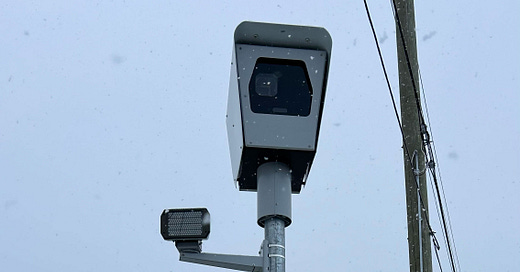83% support use of speed cameras near schools
Strong support for speed cameras in Ottawa, and data shows they work
A quick note to flag some interesting data from the 2024 Strategic Road Safety Action Plan Annual Report, received by Ottawa’s Transportation Committee last week.
Speed camera attitude survey
A total of 1,035 Ottawa residents responded to a survey commissioned by the City of Ottawa that ran from August 7 to August 18, 2024.
90% are aware of the City’s use of automated speed enforcement near schools and parks while just over half of respondents are aware of the high- speed pilot study outside of these areas.
83% support use in areas where there are children near schools.
80% support use in areas near children’s parks and playgrounds.
49% support use on “any road where there is speeding”.
45% support use in high-speed corridors.
53% per cent support automated speed enforcement.
35% have received a ticket from an automated speed enforcement camera, and of those, 69% said it changed their behaviour.
43% find speed cameras effective or very effective, 27% view them as moderately effective, and 30% do not consider them effective.
71% support the funds from automated speed enforcement to be re- invested in road safety initiatives that help reduce the incidence of fatal and major injury collisions (which is what Ottawa does with any revenue collected from fines).
The sample size is considered statistically significant, and the survey was conducted online using randomly-selected participants. I always take online survey results with a bit of skepticism – but even so, the numbers reflect what I’m hearing from the community: overall support for speed cameras in most situations.
Do speed cameras work?
It appears so! Speed studies from before and after installation of Automated Speed Enforcement cameras show continued improvement in speed limit compliance as time goes on. It also shows a significant reduction in high-end speeding at these locations.
Fatal and major injuries may be trending downward
In 2023, there were 105 Fatal and Major Injury (FMI) collisions on Ottawa streets compared to an average of 120 per year, averaged over the five preceding years.
Comparing baseline data from 2013-2017 against data from 2019-2023, just about every FMI metric is trending downward. But the latest data includes much lower traffic levels and collision numbers during the 2020/2021 pandemic lockdowns, which may be impacting some of those numbers.
It’s progress, but still a long way to go.
The Road Safety Action Plan focuses on a number of areas to reduce FMI’s even further:
Protecting vulnerable road users (cyclists and pedestrians)
Improving safety at high-collision intersections
Safety improvements in rural areas
Targeting high-risk drivers (speeding)
Ottawa’s draft 2025 budget includes $69 million for road safety initiatives in 2025, compared to $31.5 million in 2020.






